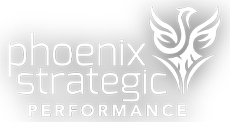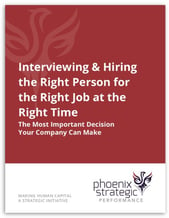For many organizations, the sales function is the front line of the marketplace. Keeping the sales function aligned with strategic goals can and does significantly impact growth. So, how could you ensure your current sales function is robust, ready, and up-skilled to accomplish the task? When is it appropriate to determine if it is time for learning and development to play a part in accelerating strategic growth goals?
Going Beyond the Numbers
Sales numbers give you only one part of the total sales story. Dig deeper behind those numbers to determine what they mean.
1. Evaluate each salesperson relative to the potential wallet value of the territory or designated client base. Sales numbers are not created equal. Often, we only evaluate the numbers, i.e., salesperson increased their numbers by 25%. That may look good, but the bigger question is 25% relative to what? If the wallet value of a client base or territory is valued at a 50% increase, then the results are lower than expected. That missing 25% has just welcomed your competition into your client base. If the match is good and you are outcompeted, your 25% increase this year could drop to 10% next year. Every miss on the sales side gives your competition an advantage at your expense and introduces unintended risk into your client plan and, ultimately, strategic results.
2. Evaluate each salesperson relative to the quality of the client base and their business.
All business is not created equal. Is the salesperson servicing the same clients without prospecting and bringing in new business? Has complacency set in? Is the salesperson self-selecting the clients they want to work with and ignoring more difficult ones? Has the knowledge and skill base required to do this part of the job eroded over time from lack of use?
3. Evaluate each salesperson relative to their market / competitive savvy.
For the most part, the days of simple sales are gone. With overcapacity in the marketplace, resulting in product commoditization, clients often have real, alternative choices. To stay current with and relevant to their clients today, salespeople must have a sophisticated marketing and sales understanding. Do salespeople understand the pressures that overcapacity can have on the product? Do salespeople understand how to highly differentiate the product so it solves the problems for different players in the buying center? Is the salesperson optimizing every client interaction with the absolute, correct sales behaviors and actions all the time? Do you know if every action is moving the client process forward? If it is not moving forward, is it then either static or moving backward? Today, there is no steady state.
Results and L&D Actions
If there are negative responses to any of these questions, there is a high probability that strategic targets will not be met. The above-mentioned considerations highlight real consequential strategic deficits that can cause severe organizational results. At the end of the year, it is an irresponsible management question to ask, “How did that happen?” It happens because these operating deficits have been ignored or denied. Senior leadership and sales management must ask the following two questions:
- Is this a knowledge deficit?
The market is constantly changing. What was relevant a year or three years ago is often no longer relevant. Therefore, the knowledge base of salespeople must be continually upgraded. Being stale in a robust market builds erosion into your organizational business model. This deficit requires learning and development as a strategic imperative. - Is this a skills deficit?
As any athlete knows, continual practice keeps skills at their highest level. The analogy directly applies to sales. When simple and complex sales skills are not continually reevaluated or are taken for granted or assumed, a strategic skills deficit builds erosion in your business model. A high-performing salesperson must have high-performing skills. Any skills deficit requires learning development as a strategic imperative. This will not get better by itself.
Observation
Even perceived business-as-usual (BAU) operations in a changing environment must be continually evaluated. Deal with knowledge and skills deficits as soon as they appear, or you will certainly deal with them later, when the deficits may have become an insurmountable abyss.
Download our case study to learn how a strategic change impacted the sales function. Discover when and how to use strategic learning development to create a more positive outcome.





